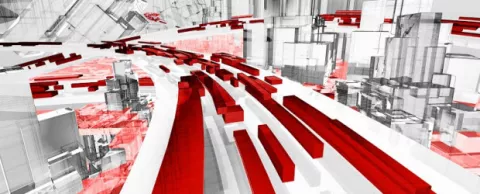
The word from city planners and mobility experts participating in a Smart Cities Week panel on autonomous vehicles (AVs) is that they will soon be traveling on city streets—and that cities have generally not taken the needed steps to integrate and accommodate them. The story below outlines some of the impacts we can expect to see for transportation systems and the built environment as a result of what many see as the biggest transformation in transportation since the automobile was invented. The story also illustrates why preparing now rather than trying to catch up later will be less expensive and less disruptive for your city's operations, and your citizens. —Doug Peeples
Call them self-driving cars, autonomous vehicles, AVs or connected cars. The new generation of vehicles will be intelligent, extremely connected by complex sensor and communications technologies and designed to make driving more convenient, reduce accidents, congestion and pollution.
But cities will need to take a ground-level view and determine how to accommodate the vehicles as well as the transition period as we move away from cars controlled by drivers to cars with little or no human input.
"There's a lot of talk about R&D on connected cars, but not much planning," said panel moderator David Rouse, Managing Director of Research and Advisory Services for the American Planning Association, a Council Advisor. "This isn't happening overnight so there some time for preparing. That's a plus. Another plus is major benefits for sustainability."
Rouse also said AVs also could increase mobility for the elderly, young people and people with disabilities—although he cautioned that planners should ensure minorities and the poor are not underserved.
Jeremy Crute, Senior Planner with the Department of Urban and Regional Planning at Florida State University, agreed with Rouse's assessment. "The first attention paid by planners was on AV technology, but not impacts on cities—and we want to avoid the same mistakes cities made during the advent of the automobile."
So what will be different?
Here are some key takeaways from the panel discussion on AVs and their impact on cities:
- AVs will mean smaller and more efficient right-of-ways that will improve traffic flow. Why? Because the vehicles will generally be smaller and other contributing factors. That will leave more open space for landscaping and bike paths.
- Most traffic signals won't be needed because the vehicles will be connected to each other and the internet. And that could lead to automated intersection management although automated systems could hinder pedestrians and cyclists trying to cross them.
- The biggest impact from AVs could be parking. Since people will be dropped off and not parking the cars themselves, they could park in more remote locations, freeing up precious city land for other uses. Imagine a mall surrounded by green space and not a sea of asphalt, as Crute put it.
All of the above could easily mean a major change in how public space is used, something city planners will need to address in addition to the new transportation technologies.
And there will be other related changes planners will need to deal with, according to Creighton Randall of the Shared Use Mobility Center. "By 2025, private car ownership will be almost gone." He was referring to the increasing popularity of shared mobility options like buses, car and ride sharing, and bike sharing. Randall added that those shared mobility options will likely be used more in cities than suburbs and other outlying areas.
More on transportation planning...
To learn about other transportation planning issues, best practices and case studies from cities that are developing smart transportation systems, click on the Transportation link in the Council's Smart Cities Readiness Guide.
Doug Peeples is a Portland, Oregon-based writer specializing in technology and energy. Follow @smartccouncil on Twitter.



